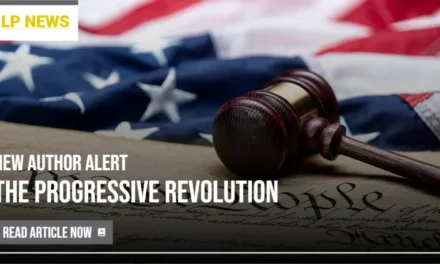Redistricting and its corrupt form, gerrymandering, have been a problem since the inception of the United States. Redistricting has become more prevalent since the 1960s, with the resulting maps often drawing district lines based on racial or political identities in order to comply with court mandates, or alternatively to give one party or incumbents in general an unfair advantage. Despite partisan gerrymandering being officially declared a violation of the Equal Protection Clause in Davis v. Bandemer (1986), and despite the Supreme Court reaffirming the unconstitutionality of racial gerrymandering in Miller v. Johnson (1995), the issue of fair and representational districts is still a giant obstacle facing our republic. The idea of proportional representation and ranked choice voting not only makes the most practical sense as a response to this challenge, but also allows for the most freedom of choice in a country where it increasingly feels like that freedom is being taken away.
The major problem with redistricting is the same as with many issues today: polarization. Because of the existence of strongly partisan voting blocs along racial and geographic lines, duopoly politicians are working constantly to rewrite maps to gain partisan advantage. North Carolina Republicans have recently gone all the way to the Supreme Court to defend their nakedly partisan redistricting measures. But one need only look at maps of congressional districts in places like Illinois or Texas to see that politicians in both major parties have produced bizarrely shaped districts in order to choose their own voters.
Even third parties have bought into this logic in their own way. For instance, the Free State Project seeks to move as many libertarians as possible to New Hampshire in an effort to drastically change the state’s voting demographics. Such movements may seem appealing to parties which do not see a foreseeable route to electoral victory in the short term—a party rooted in seeking good through common ground needs to pursue more lasting solutions. Rather than kicking the same can down the street, we can establish a simpler and more representative way to redraw district maps, one that produces a political system that encourages political integrity and lets voters know their vote makes a difference in who represents them.
While gerrymandering is at the root of much of our political dysfunction, redistricting by itself can’t fix it, even with a fairer and less partisan process. What should be the priority in creating new maps? More competitive elections? More equitable racial or political representation across the state? Geographic compactness? There is no such thing as a perfect map in these regards. Trying to strike the perfect balance does not fully tackle the issue of making representation better. Instead, we must consider this issue alongside that of voting methods. Voters who choose the lesser of the two evils do so because our winner-take-all electoral system awards 51% of the electorate with 100% representation in any particular district. The other 49% gets nothing. This is especially apparent in swing states, such as Nevada, where the statewide electorate is roughly divided in half. In Nevada, with a population of 3 million, 1.4 million voices will go unheard in an election in which 1.6 million vote for the other candidate. We also see it in districts that tend to vote against an overwhelmingly one-sided statewide electorate, such as the districts of Salt Lake City in Utah. When a minority–even a large minority–of losing voters is effectively shut out of power, partisanship and polarization is the order of the day.
Fortunately, there are alternatives. The United States should move to a system of proportional representation. Such a system would create fewer districts, each represented by more than a single representative. Seats in the House of Representatives (and the lower houses of state legislatures) should be allocated based on the proportion of the vote, meaning that if ⅓ of voters in a district cast their ballots for a party, that party should receive roughly ⅓ of the seats in that district in the election. There are many methods of achieving proportional representation, from party-list PR to mixed-member PR, but the idea remains the same. Multi-member districts could also be combined with forms of ranked-choice voting, such as the single transferable voting (STV) system. In this approach, voters could rank their options and their vote would transfer to their secondary preferences if their first option is eliminated by not getting enough votes. All of these changes would simplify the problem of redistricting, and they would reduce the marginalization of voters and communities by a partisan electoral system.
A reformed electoral system wouldn’t only be fairer for voters: it would promote real conversations between bridge-builders that move us past gridlock. The GOP and Democrats have maintained their duopoly on American politics in part by enabling extremism in their bases through the use of wedge issues rather than focusing on winning over the independent vote. It is unlikely that the issue of redistricting will be solved in a critical and thoughtful way as long as those in power benefit from the current electoral system. A system based on proportional representation and/or ranked choice would give politicians incentive to seek common ground, because even voters whose views are in the minority have a direct impact on the ability of parties to win offices. Rather than stoking fears of the other side to drive turnout among their base, politicians would have a compelling motivation to persuade a broad coalition of voters.
Reformers face an uphill battle, but fortunately there are different paths to achieve these changes. The 10th Amendment provides states the right to structure their own elections, and ranked-choice voting initiatives have already succeeded in states like Maine and Alaska. Federally, numerous acts of legislation have been proposed to implement proportional voting systems, most notably The Fair Representation Act (HR 3863). Demand for reform is widespread, and one of the most important tasks of contemporary politics is to not only advocate for it, but to provide a political vision that shows how the country can benefit from a more open and efficient electoral system. The time has come for Americans to cast their votes proudly and confidently, for a party that stands up for what it believes, in a system where their vote matters.
The opinions shared here do not necessarily represent the official position of the Libertarian Party. These editorial articles have been submitted by Libertarians across the country, and featuring these topics does not represent an endorsement of the content therein.
The opinions shared here do not necessarily represent the official position of the Libertarian Party. These editorial articles have been submitted by Libertarians across the country, and featuring these topics does not represent an endorsement of the content therein.






Multi-member districts are crucial for minority representation; which is to say there should be one district per state and winners declared by popular vote, whether using RCV or other scheme; no runoffs needed, no gerrymandering.
While I’m torn (since election-laws are generally delegated to the States), this Proportional Representation system proposed by the “Fair Representation Act” (17th Congress’ H.R. 3863) sounds quite good.
https://www.govtrack.us/congress/bills/117/hr3863
Hopefully, it gets renewed in the current 118th Congress.